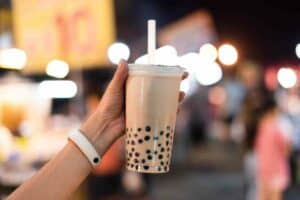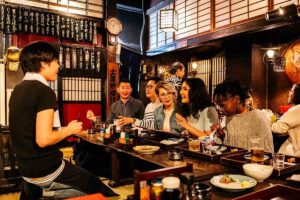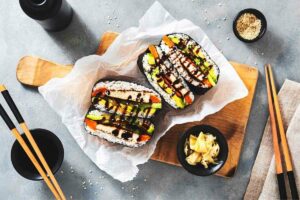When someone mentions Asian cuisine, most people think of spiciness and tanginess. Why?
Asians have a reputation for seasoning their foods with several condiments to add tastiness and aroma.
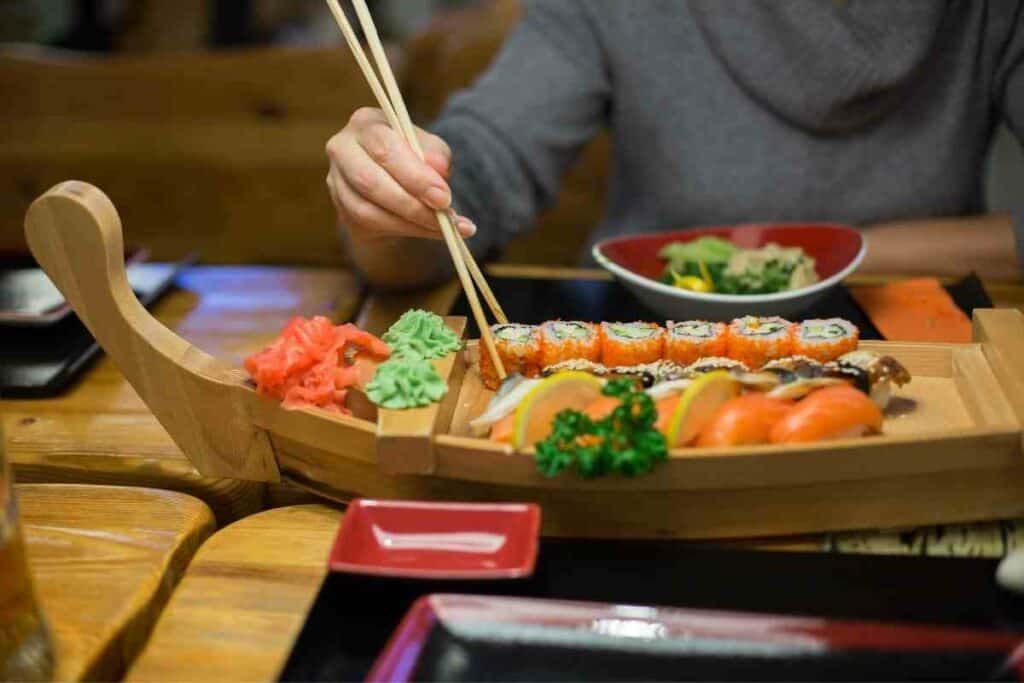
For Instance – Indians and Koreans are notorious for making overly spicy dishes. But, surprisingly, Japanese food isn’t always spicy.
Table of Contents
Why do Japanese dishes taste mild?
Japanese food is mild compared to its immediate neighbors, such as China and Korea.
Not bland, but it’s so gentle that you can notice a dip in spiciness.
History, culture, and climate are why Japanese dishes aren’t as hot as other Eat Asian delicacies.
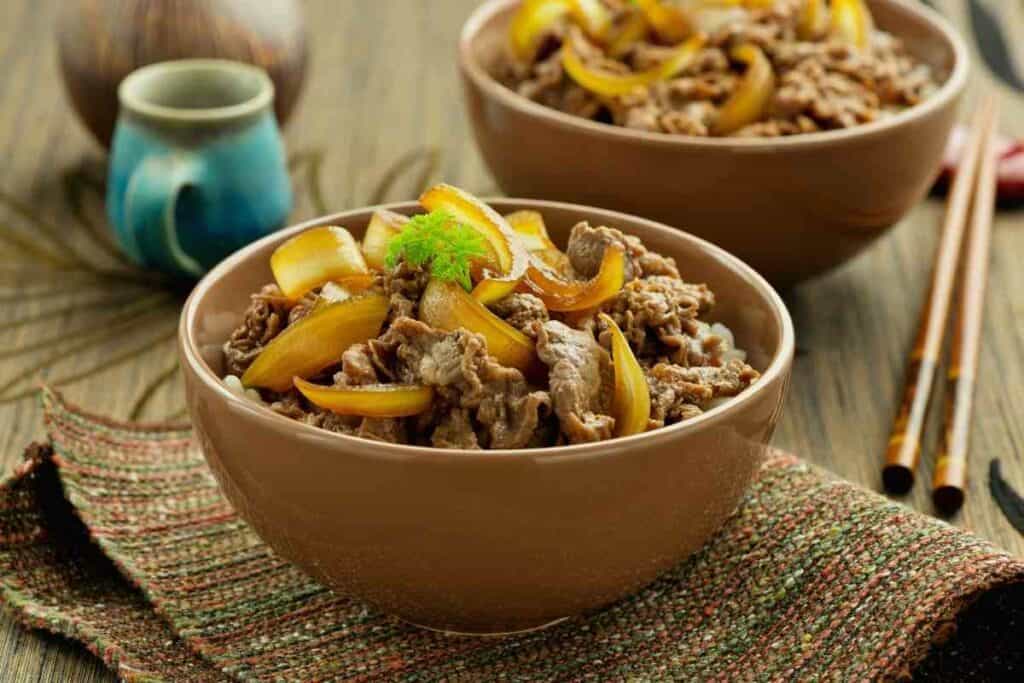
Japanese people love the authentic and subtle taste of food.
For instance, they like the ultra-fine sweetness of rice, the pleasant aroma of soy in tofu, and the slight bitterness in some vegetables.
These natural tastes and flavors express the traditional culinary ideology of harmony, called Umami.
Spicy herbs like basil, ginger, myoga, and sanshou are mainly used to add some flavor to soups and broths served alongside meals like rice and fish.
These soups are appetizers that work well for people with low appetites, a common occurrence resulting from scorching summer temperatures.
An example of Japanese foods’ subtleness and mildness lies in the country’s preferred rice-growing regions.
This particularly applies to white rice, one of the most popular cereals in Japan.
When shopping for this rice type, locals assess many details:
- the kind of water
- soil and season it grew in
- and the growing region
Such little details are crucial to Japanese people.
Additionally – The Japanese prefer eating plain rice to assess its flavor. To them, it’s about appreciating food’s natural taste and aroma. Apparently, spices and seasoning overpower or interfere with a dish’s purity.
Why do the Japanese love non-spicy cuisine?
Nobody knows why the Japanese developed a strong interest in mild-tasting foods.
Curry Was Unknown
Despite being close to India for many years, (albeit indirectly) curry was unknown in Japan before the Meiji Era (1868-1912) when the British introduced it.
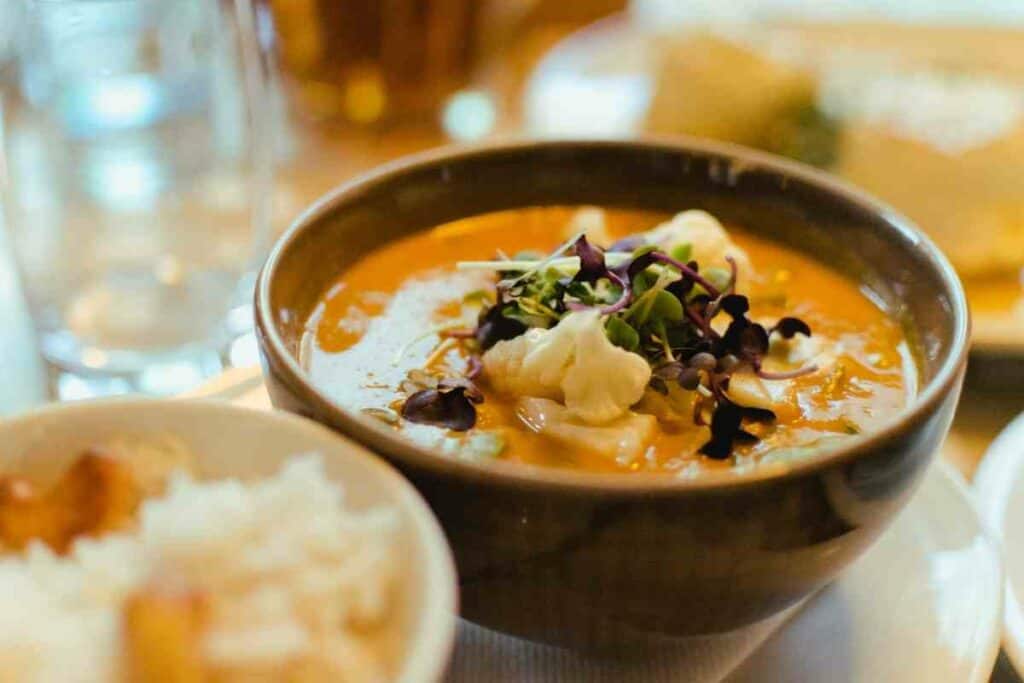
Even then, it was only available as ‘Japanese curry,’ which is sweeter than regular curry.
Like curry, soy sauce was only introduced to Japan in the last century.
However, it’s a Chinese creation that the Japanese have seemingly perfected, despite being brought over less than a hundred years ago.
Climate
Climate is perhaps another reason why Japanese food isn’t as spicy as its East Asian counterparts.
Generally, Southern Chinese foods are spicier than those from Northern China. Japan happens to be closer to China’s Northern region.
Japan experiences a temperate climate, except for Okinawa.

In contrast, Asian countries renowned for spicy foods have tropical and subtropical climatic conditions.
Necessity
Necessity drives human desire – some argued that Japanese people aren’t into spices because they don’t need them.
In the past, people used herbs to preserve food. Remember, food usually goes bad faster in hot and humid climates.
However, Japan had favorable conditions, meaning they didn’t require spices to keep food edible.
Traditional Japanese food preservation culture preferred pickling and fermentation over other methods. These are mild unless you spice the food before storage.
Chili Pepper History
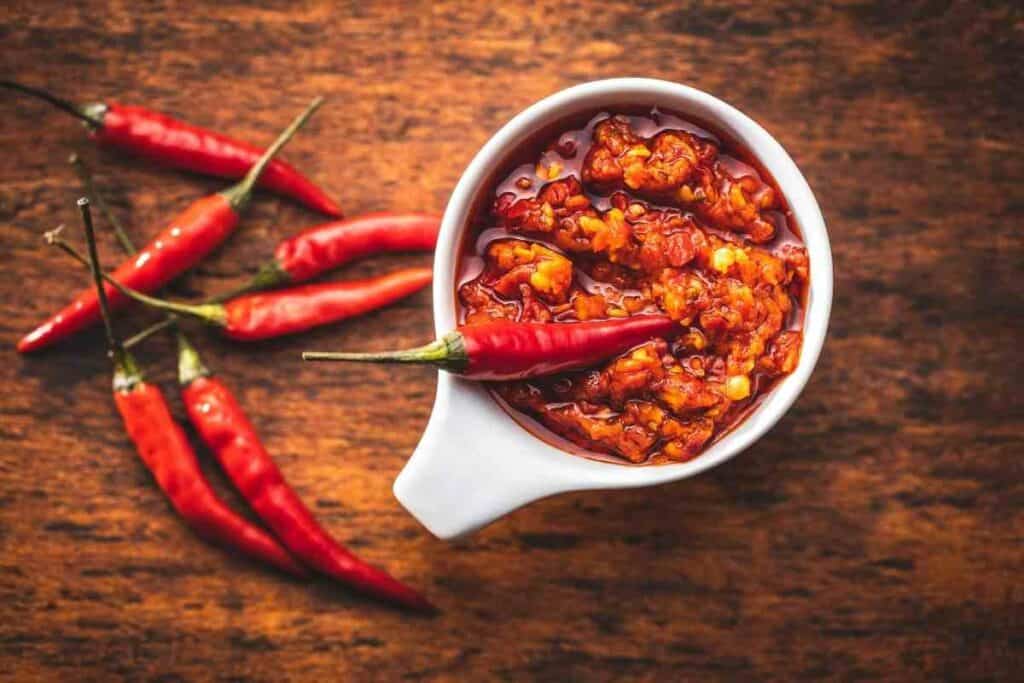
Lastly, examining the history of the chili pepper can prove that older Japanese generations had a preference for less spicy foods.
Chili peppers are a relatively new species originating from Mexico.
This means that related crops found outside Mexico were either cultivated within the last five centuries to suit particular people.
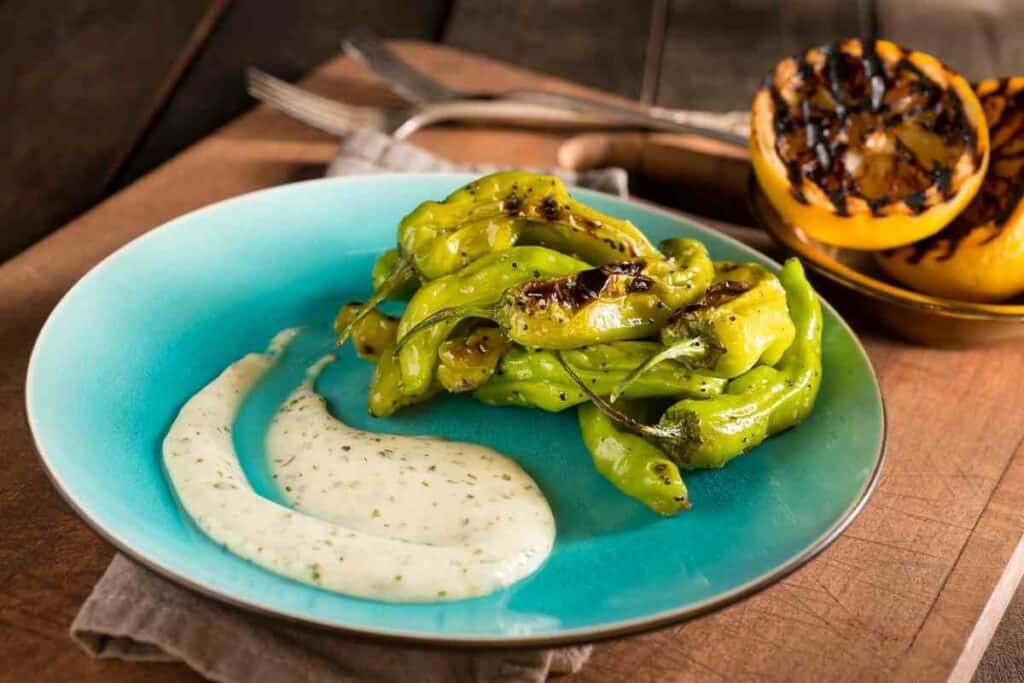
One example is the Japanese chili pepper, called Shishito, which has an extremely mild taste. It proves that locals preferred mild spices.
What’s the spice tolerance of the Japanese people?
Unlike other Asian countries where many people have spice tolerance, the ability to take hot foods varies greatly among Japan’s population.
Most people have little tolerance for spicy foods, while a sizeable percentage enjoy them.
The reasons are apparent: most Japanese foods aren’t spicy, and their Western equivalents are mild.
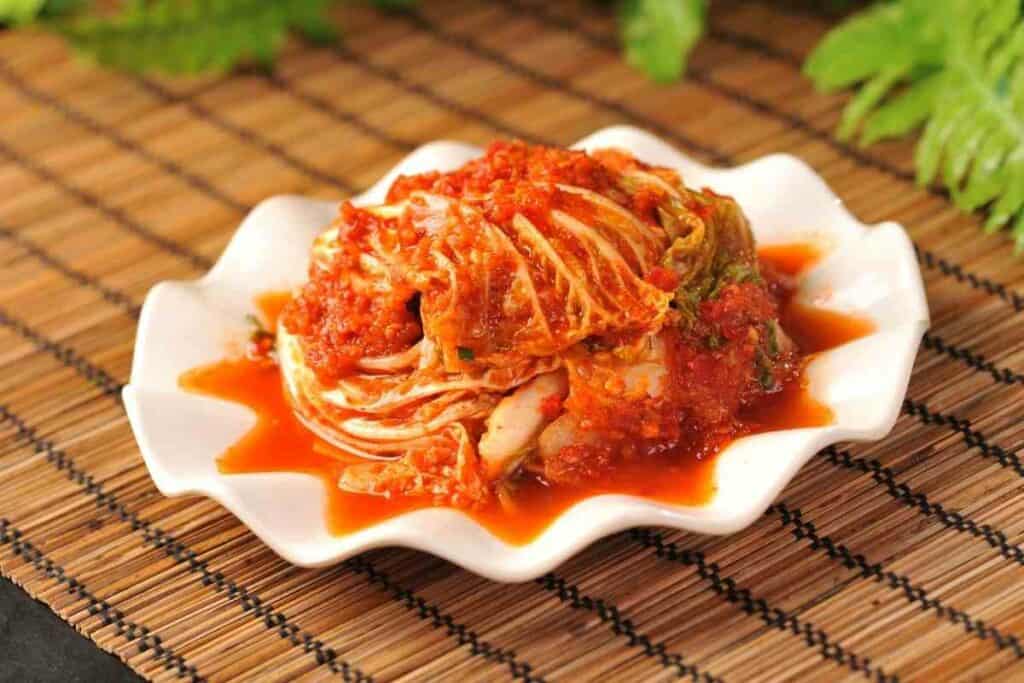
Thus, if you are traveling to Japan for the first time, you shouldn’t worry about eating extremely spicy food.
However, there are a few exceptions:
- A perfect example is kimchi, a spice the Japanese and Koreans adore. While most kimchi types are tolerable, some can be too hot for an average tongue.
- The same applies to Japanese curry, which is mainly sweet but can require training at times.
To cater to the varying tolerance levels, most food vendors sell the curry at different ‘spiciness levels’ so that everybody can have what suits their taste.
The levels start from zero to high. Most Westerners can eat medium-level curry without any challenges.
Children can also get a taste of the non-spicy varieties. However, the packs labeled ‘spicy’ can get too hot.
Are there spicy foods in Japan?
Although it isn’t easy to run into them, you can get spicy foods if you’re keen on them.
Usually, such foods are regional delicacies rather than internationally recognized tempuras and sushi.
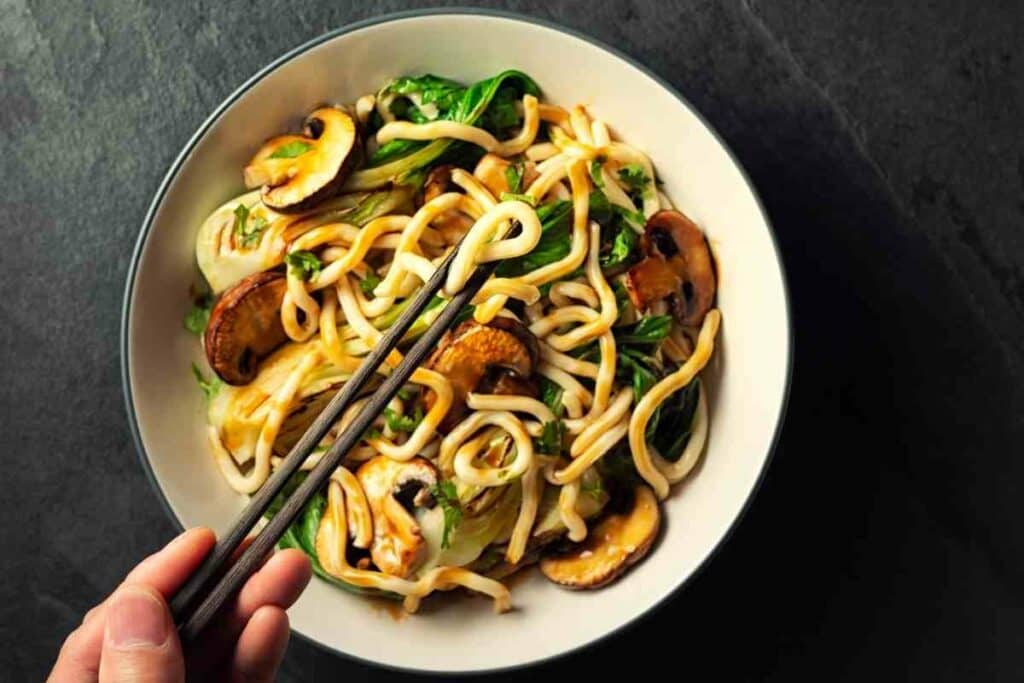
For instance, the Hachijo region is notorious for using too many chili peppers in its recipes.
The chili peppers are used in:
- noodles
- salads
- sauces
- and as a wasabi substitute in fish
Hachijo culinary culture has significantly impacted Okinawa and southern Kyushu, so expect to find spicy foods when you tour those regions.
Also, there’s a story that the Japanese introduced peppers to Korea. The peppers came from the Mariana islands and passed through Hachijo before going to Korea.

However, the validity of this story remains questionable.
Besides Hachijo, you can get spicy foods in Hokkaido.
For Example – The Hokkaido soup curry is so hot that it can make you cry. Alternatively, you can visit a restaurant and order Korean or Thai cuisine.
Wrapping Up
You can easily label Japanese food ‘bland’ if you aren’t familiar with it.
Unlike other East Asian cultures, the Japanese don’t lace their meals with many spices and seasonings.
Instead, they try to maintain food’s natural flavor by adding a little salt and avoiding using spices. Therefore, anybody used to sauces and too much salt will likely find the food ‘tasteless.’
To appreciate Japan’s rich culinary culture, you must switch off dependence on heavy seasoning. Instead, you’ll subdue your prejudice and enjoy the subtle flavors and aromas.
- Japanese Traditional Sweets (Wagashi): A Guide to Their Origins and Varieties
- A Taste of Japan in Every Bite – Japanese Candy & Snack Box Review
- Bubble Tea vs Boba Compared: What’s the Difference?
- Best Izakaya Foods for a Relaxed Night Out (My Top 10 Picks)
- Edo Kiriko Whiskey Glasses (Japanese Heritage in Every Pour)
- Japanese Viral Foods on Social Media (Discover the Top 10)



